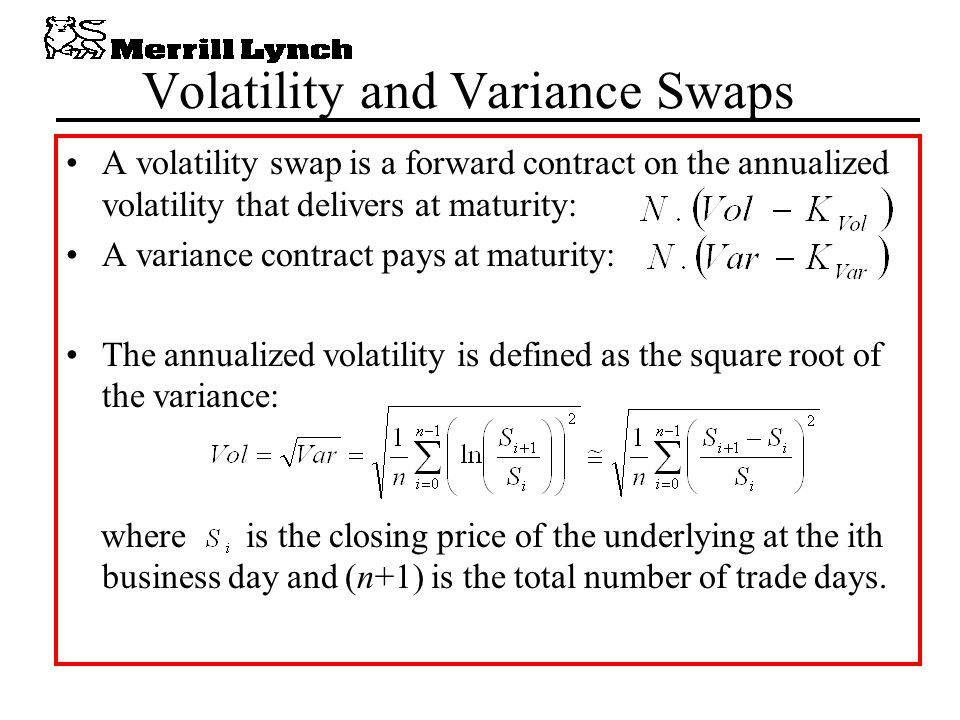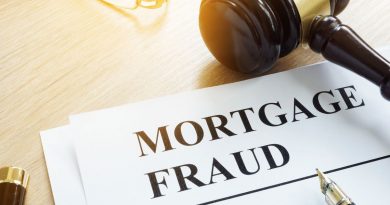Volatility Swap What it is How it Works Example

Volatility Swap: What it is, How it Works, Example
What Is a Volatility Swap?
A volatility swap is a forward contract with a payoff based on the realized volatility of the underlying asset. They settle in cash based on the difference between the realized volatility and the volatility strike or pre-determined fixed volatility level. Volatility swaps allow participants to trade an asset’s volatility without directly trading the underlying asset.
Volatility swaps are not swaps in the traditional sense, with an exchange of cash flows between counterparties.
They are also similar to variance swaps, where the payoff is based on realized variance.
Key Takeaways
– A volatility swap is a forward contract with a payoff based on the difference between realized volatility and a volatility strike.
– The payoff for a volatility swap is the notional value of the contract multiplied by the difference between realized volatility and the volatility strike.
– Volatility swaps are not swaps in the typical sense, as usually swaps involve an exchange of cash flows based on fixed and/or varying rates. Volatility swaps aren’t an exchange of cash flows, but rather a payoff-based instrument based on volatility.
Understanding Volatility Swaps
Volatility swaps are pure volatility instruments allowing investors to speculate solely upon the movement of an underlying asset’s volatility without the influence of its price. Thus, just like investors speculate on the prices of assets, by using this instrument, investors are able to speculate on how volatile the asset will be.
The name swap, in this case, is a misnomer because swaps are structured contracts consisting of cash flow exchanges, typically matching a fixed rate with a variable rate. Volatility swaps, and variance swaps, are actually forward contracts with payoffs based on the observed or realized variance of the underlying asset.
At settlement, the payoff is:
Payoff = Notional Amount * (Volatility – Volatility Strike)
At inception, the notional amount is not exchanged.
The volatility strike is a fixed number that reflects the market’s expectation of volatility at the time the swap begins. In a sense, the volatility strike represents implied volatility, although it is not the same as traditional implied volatility in options. The strike itself is typically set at the beginning of the swap to make the net present value (NPV) of the payoff zero. What volatility actually ends up being at the end of the contract determines the payoff, assuming it is different than the implied volatility/volatility strike.
Using Volatility Swaps
A volatility swap is a pure-play on an underlying asset’s volatility. Options also give an investor the possibility to speculate on an asset’s volatility. However, options carry directional risk, and their prices depend on many factors, including time, expiration, and implied volatility. Therefore, the equivalent options strategy requires additional risk hedging to complete. Volatility swaps don’t require this, they are simply based on volatility.
There are three main classes of users for volatility swaps.
1. Directional traders use these swaps to speculate on the future level of volatility for an asset.
2. Spread traders merely bet on the difference between realized volatility and implied volatility.
3. Hedge traders use swaps to cover short volatility positions.
Variance swaps are far more common in equity markets than volatility swaps.
Example of How to Use a Volatility Swap
Assume that an institutional trader wants a volatility swap on the S&P 500 index. The contract will expire in twelve months and has a notional value of $1 million. Currently, the implied volatility is 12%. This is set as the strike for the contract.
In twelve month’s time, volatility is 16%. This is the realized volatility. There is a 4% difference, or $40,000 ($1 million x 4%). The seller of the volatility swap pays the swap buyer $40,000, assuming the seller is holding the fixed leg and the buyer the floating leg.
If volatility dropped to 10%, the buyer would pay the seller $20,000 ($1 million x 2%).
This is a simplified example. Since volatility swaps are over-the-counter instruments (OTC) they can be constructed in different ways. Some alternatives may be to annualize the rates or calculate the difference in volatility in terms of daily changes.



